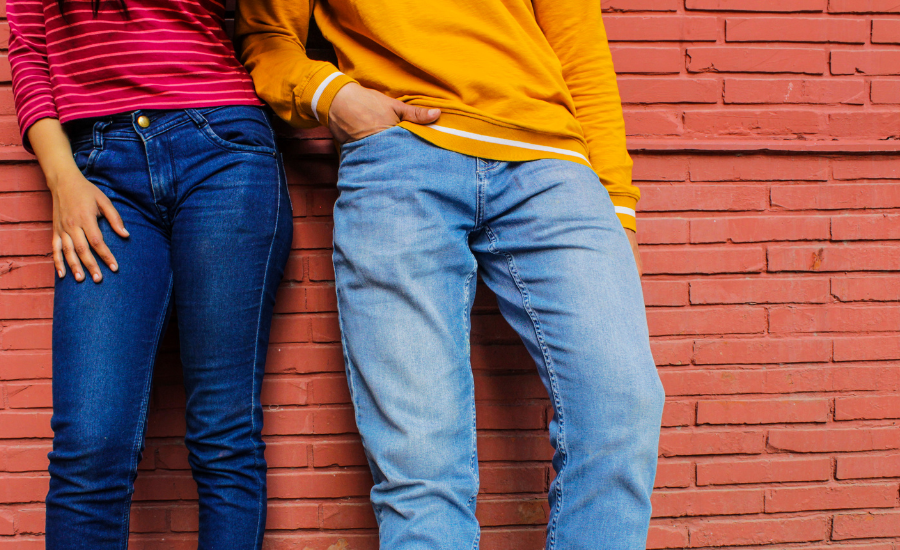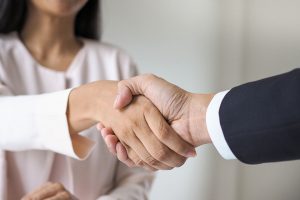It’s a common tendency for people to judge a book by its cover. As many as 95% of people think that first impressions are extremely important.
Chances are your interviewer falls under that majority and you need to make sure you exude trustworthiness and confidence when you walk into the interview room.
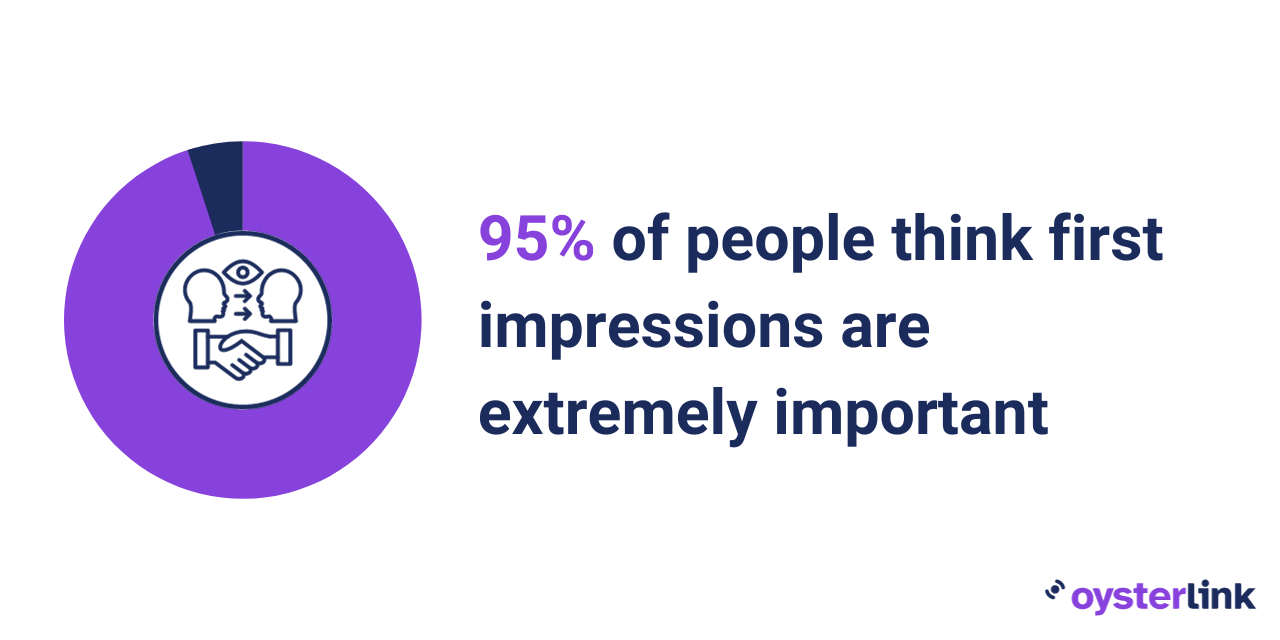
[Source: Science of People]
Besides a firm handshake and eye contact, you need to be dressed for part too. Can you wear jeans to a job interview? What colors should you choose? What should you wear for a professional look?
OysterLink is a platform dedicated to helping people find their dream jobs. So, we will provide the answers to these questions, offer tips on what clothes to stay away from and more, ensuring you present your best self to potential employers.
Can You Wear Jeans To an Interview?
As business-appropriate fashion evolves, it’s important to understand the subtleties of dressing appropriately for job interviews. You may find yourself wondering:
- “I’m only applying for a part-time job, so jeans should be fine, right?”
- “Are jeans acceptable for an entry-level or student job interview?”
The answer? It’s wise to err on the side of caution. Jeans, regardless of the context, are generally not considered appropriate interview attire.
The goal is to strike a balance between fitting into the company culture and projecting professionalism.
While it’s true that showing up in a suit and tie may be excessive if the company culture leans toward business casual, underdressing can send the wrong message.
Sign up to receive the latest salary trends
How To Determine If Jeans Are Appropriate for Your Interview
To determine if jeans are appropriate for your interview attire:
- Research the company culture: If the company is known for a casual atmosphere, jeans might be acceptable. However, if it’s more formal or professional, lean toward dressier options.
- Consider the job role you’re applying for: The nature of the job matters. For roles in creative fields or startups, jeans may be more acceptable. In contrast, roles in finance or law typically require more formal attire.
- Understand the industry norms: Different industries have different dress codes. Industries like hospitality often embrace casual wear unless it is a high-end establishment, while finance or consulting tends to be more formal.
- Browse the company’s website: Check the company’s website for any information about dress code or culture. It can provide valuable guidance.
- Reach out to current employees: If possible, reach out to current employees to inquire about the interview dress code. They can offer firsthand insights.
- Keep it neat: If you decide on jeans, ensure they are clean, well-fitted and free of rips or excessive details.
How To Dress for an Interview: Interview Clothes for Women
While you may already own suitable options, here’s a fresh perspective:
Consider The Versatile Classic
Consider a classic black dress or suit paired with heels. This timeless combination can be adapted to various interview settings. It’s a reliable choice that can be dressed up or down with the right accessories, such as statement jewelry, a sleek belt or a tasteful scarf.
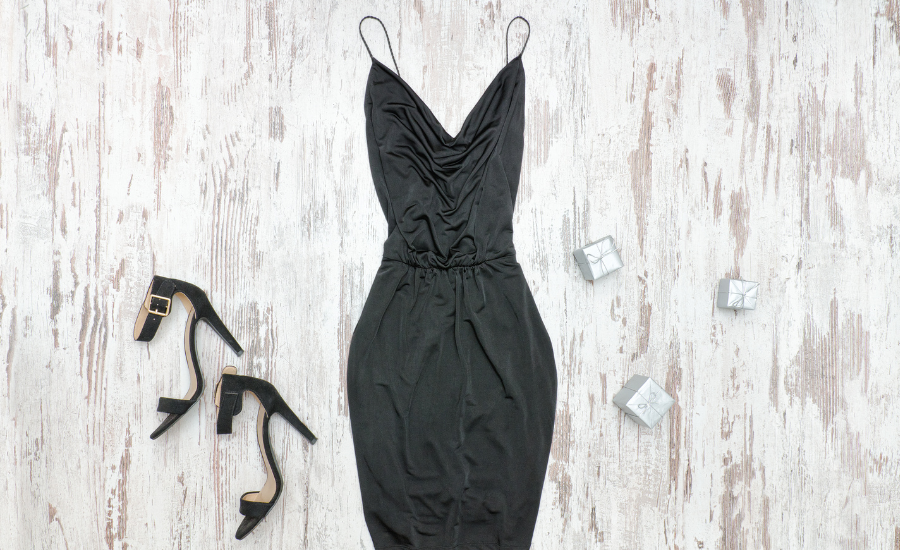
These additions can help you personalize your look while maintaining a professional appearance.
Prioritize Comfort and Confidence
Avoid clothing that makes you uncomfortable or undermines your confidence. If you rarely wear heels, don’t opt for towering stilettos that might hinder your comfort and mobility.
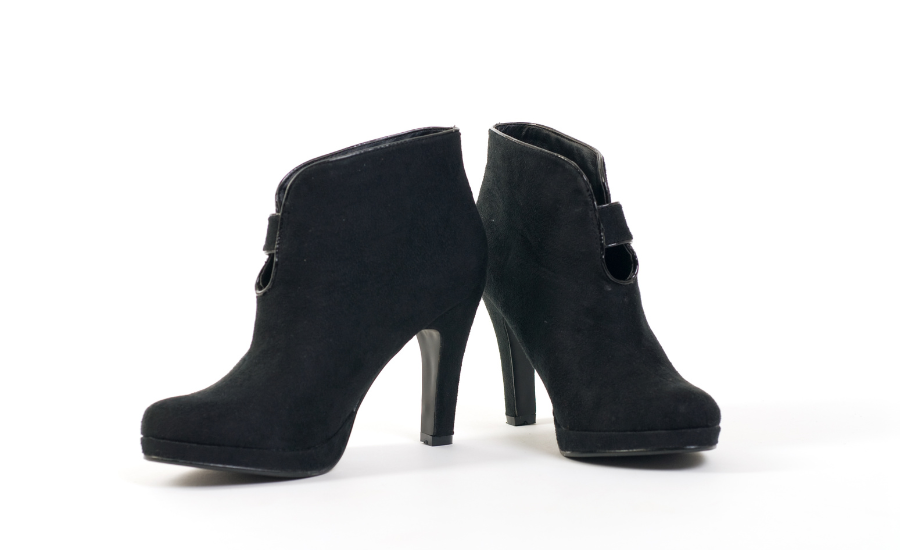
Instead, choose footwear that allows you to move confidently, such as closed-toe pumps with a moderate heel height, comfortable flats or stylish ankle boots.
Use What You Have
If you already own interview-appropriate attire that you feel confident in, don’t hesitate to wear it again.
A smart two-piece outfit or clothing you’ve worn to previous interviews, such as a well-fitted blazer paired with tailored trousers or a classic pencil skirt and blouse, offers a polished and professional appearance.
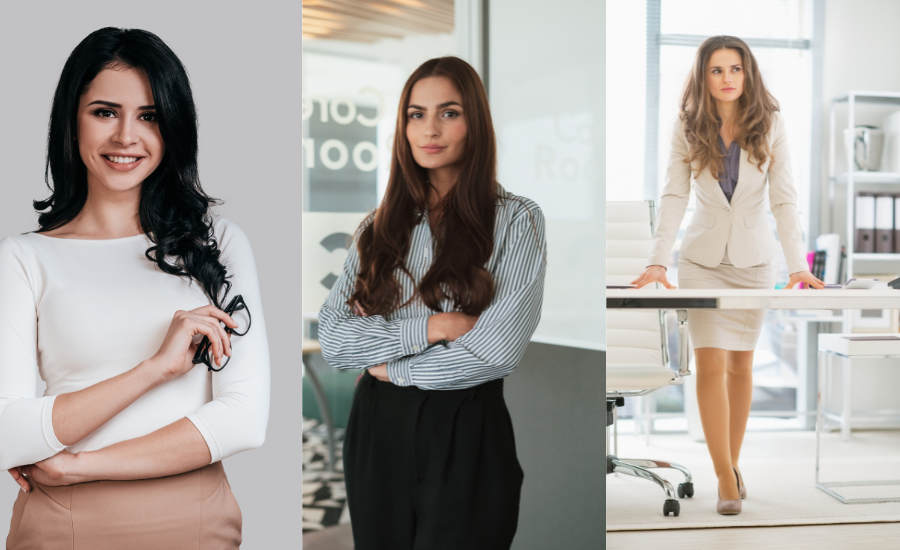
Reusing your wardrobe not only saves money but also ensures you feel at ease in your outfit.
How To Dress for an Interview: Interview Clothes for Men
When it comes to dressing for a job interview, men have several scenarios to consider. Here’s a unique take on interview attire:
Business Formal Attire
For traditional office settings or white-collar jobs, simplicity and conservatism are key. Opt for a well-fitting navy blue or charcoal gray suit with a white dress shirt.
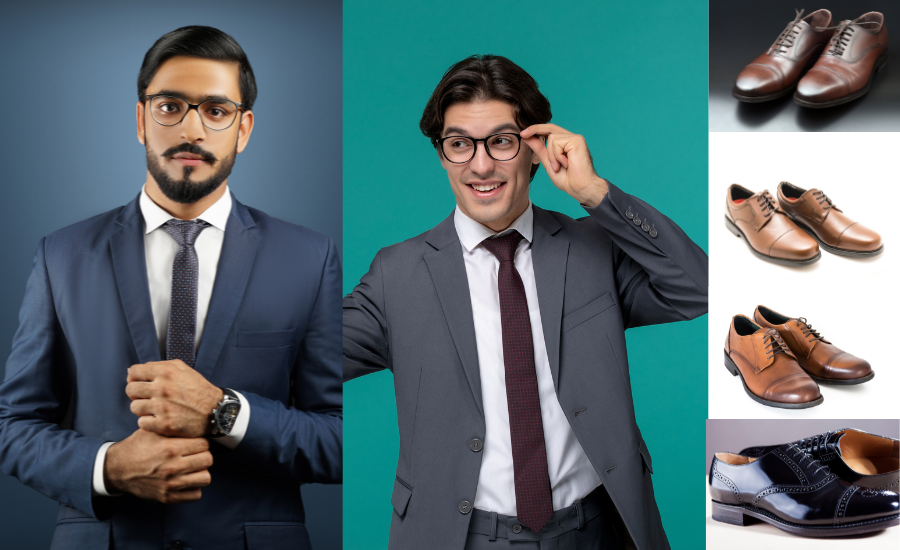
A solid-colored or subtly patterned tie adds a touch of personality. Ensure your socks match your pants’ color and choose polished black oxfords for a formal look. Don’t forget a white pocket square and a classic watch for extra detail.
Business Casual Interview Attire
In an era of increasing workplace casualness, business casual interviews require a balance between professionalism and comfort. Consider an oxford cloth button-down shirt in white, light blue, or a pattern like stripes.
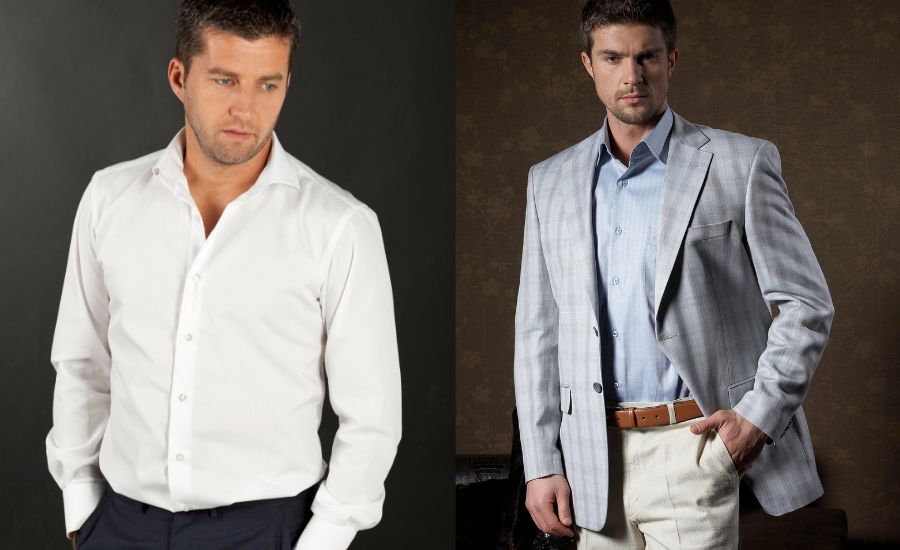
Pair it with gray flannel trousers or neutral dress pants. To tone down the formality, opt for chinos and complement the outfit with brown or oxblood lace-up shoes. Add a blazer or sports coat for a polished appearance but ensure there’s enough contrast between the jacket and pants.
Casual Interview Attire
For interviews where formality is unnecessary, like blue-collar or restaurant roles, choose a relaxed yet professional look.
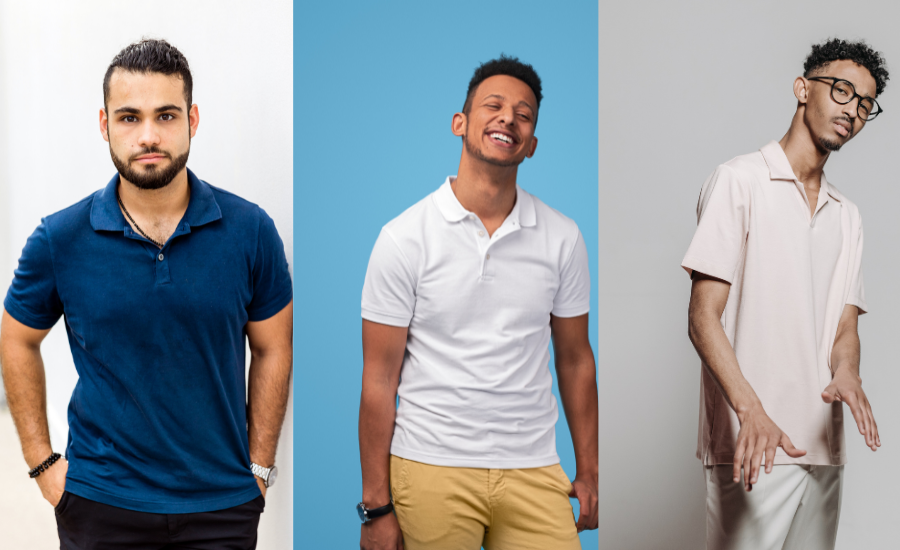
A polo shirt with chinos or khaki pants works well. Stick to basic, solid colors and ensure your outfit fits impeccably. Loafers, brogues or dressy boots are suitable footwear options.
Best Colors To Wear for an Interview
While the classics like black, navy, gray and brown are considered safe and neutral choices, adding a touch of color can help showcase your personality. Here’s our take on selecting interview attire colors:
- Black: Black exudes leadership and sophistication. It’s best reserved for high-powered interviews or managerial positions. For more relaxed environments or entry-level positions, use black as an accent, such as a tie or pair of pants combined with another color.
- Blue: Blue signifies confidence and trust. It’s a great choice for most interviews. Brighter shades grab attention, while darker tones suit conservative professional roles.
- Gray: Gray communicates independence and analytical thinking. It provides a solid foundation for adding small pops of color, like a jewel-toned tie or accessories.
- White: White is safe and signals attention to detail. It’s a versatile color that pairs well with colorful accents, such as socks or accessories, to express your personality.
- Brown: Brown conveys reliability and dependability but may come off as old-fashioned in innovative settings.
- Red: Red represents passion and power. Use it sparingly as an accent, like a pocket square or scarf, to convey energy and courage.
- Yellow: Yellow suggests a fun personality and optimism, making it suitable for creative fields. Choose the right shade and avoid it for more traditional roles.
- Green: Green is fun and works well as an accent in creative fields. Opt for darker shades of green to maintain professionalism.
Consider the mix: When combining colors, think about how they work together. A dark suit with a brightly colored shirt can look highly professional, while muted gray clothing with a red jacket can be stylish.
Tips to consider:
- Choose solids over patterns to avoid distractions.
- Use a neutral color as the dominant one, with bright colors as accents.
- Prioritize confidence and comfort when selecting your outfit.
What Not To Wear to a Job Interview
Here’s the list of clothes and footwear to avoid when dressing for a job interview:
- T-shirts: While T-shirts can be comfortable, they are generally too casual for job interviews. Even when paired with a blazer, they may not convey the professionalism your employers are looking for.
- Open-toe shoes: Sandals, flip-flops or crocs are better suited for casual occasions.
- Sneakers: While formal sneakers are on the rise, it’s best to steer clear of them for job interviews.
- Restrictive clothing: Overly tight or restrictive clothing can hinder your comfort and range of motion during an interview.
- Hats and headwear: Hats, beanies, headphones and earbuds can divert attention during interviews. Unless for religious or cultural reasons, it’s advisable to remove them when meeting with potential employers.
- Athletic clothing: Save your athletic wear for the gym. Leggings, hooded sweatshirts, athletic T-shirts and sweatpants should not be part of your interview attire.
- Faded clothing: Wearing faded or worn-out clothing items can make you appear unprofessional.
- Visible undergarments: Ensure your undergarments are not visible through your clothing. Layering a tank top under a sheer blouse is a smart solution to avoid undergarment exposure.
- Revealing clothes: Avoid showing too much skin or displaying visible tattoos, especially for roles with conservative dress codes.
- Heavy makeup: Opt for natural makeup without dark or heavy eye makeup. Be mindful of strong fragrances, as some people may be sensitive to scents.
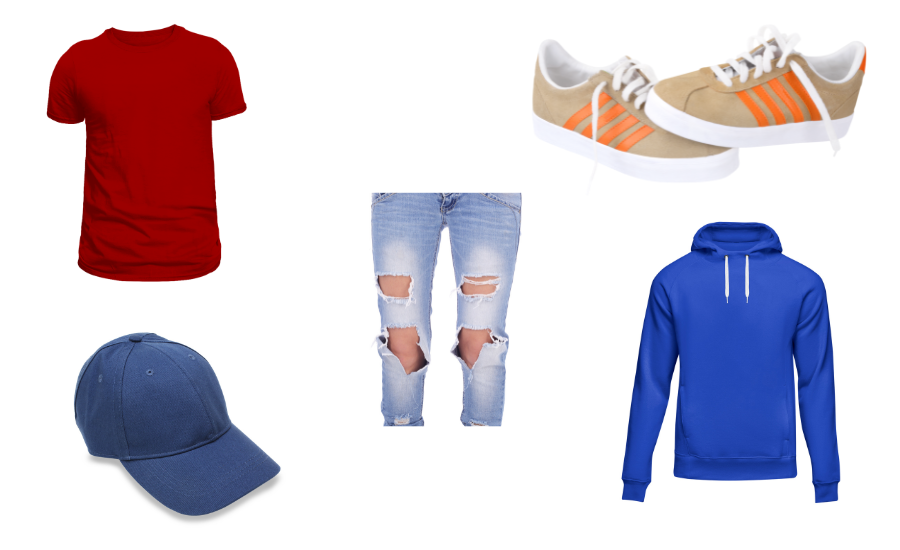
To get a better insight into what not to wear to a job interview, check out our full article on this subject.
How To Prepare for a Job Interview
Picking out the right outfit for your job interview is just one part of being fully prepared to shine your best colors.
To set yourself up for success, find out how to ask for a salary in an interview, what not to wear to a job interview and whether should you be the first to make that follow-up call after the interview.
